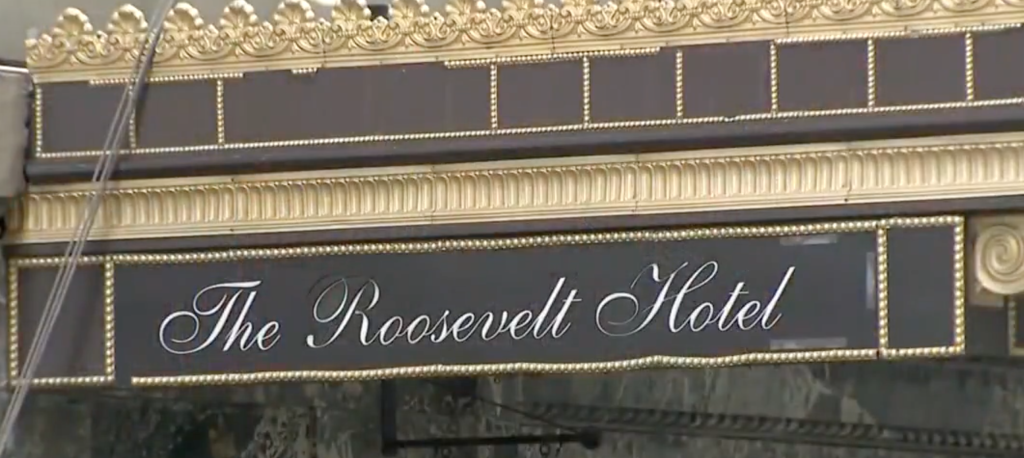







If Joe Biden's open borders policy had a face, it would be the facade of Midtown Manhattan's Roosevelt Hotel.
The Italian Renaissance Revival structure opened in the Roaring '20s, just over a century ago. The 19-story structure was built above several train tracks serving Grand Central Station, and designed by George B. Post & Son.
Today, we announced we will begin the process of closing down The Roosevelt Hotel’s Asylum Arrival Center and Humanitarian Emergency Response and Relief Center.
— Mayor Eric Adams (@NYCMayor) February 24, 2025
Here’s what to know: pic.twitter.com/l1NKtCNElC
The hotel, named after President Teddy Roosevelt, suffered the same fate as so many other tourist destinations during Covid lockdowns. It closed in 2020, but reopened as a shelter in 2023 for the hordes of undocumented illegal aliens arriving in New York.
The "Ellis Island" tag stuck to the Roosevelt because it was also the processing center for roughly 75% of the New York alien arrivals. Behind its guarded doors, aliens received documentation and benefits, including, for a ten-month stretch in 2024, debit cards.
Pakistani International Airlines owns the building, one of 53 shelter sites to be closed in 2025.
It's being reported that the epicenter of the migrant crisis here in New York City. The Roosevelt Hotel is set to close in June.
— Viral News NYC (@ViralNewsNYC) February 24, 2025
I must have spent 100s of hours at this location pic.twitter.com/AK2PPDNjLJ
According to Mayor Eric Adams, New York City received as many as 4,000 alien arrivals per week at the height of the open borders crisis. That number, Adams claims, has dwindled to 350 per week.
The next reckoning for the developers who own properties used to shelter aliens: what to do with the bricks and mortar? To be sure, properties like the Roosevelt were highly profitable while used as shelters. The facilities were sold out for well over a year, with rooms booked at prices far above pre-Covid rack rates.
The hotel's rooms are reportedly in shambles. Power outages were common as occupants overloaded the electrical system by using hot plates and other high-load devices despite fire hazard warnings. Even after a thorough renovation, surely very few tourists would want to stay in the Roosevelt.
Perhaps other facilities that housed illegals should attempt to rebrand. They might be successful and survive as the memories attaching their names to the open borders crisis fade over time.
The Roosevelt, however, is likely beyond salvaging. Perhaps it can be repurposed for another use, but it beggars belief to think anyone would pay good money to stay there in the future.






